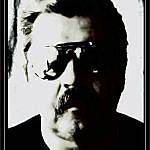My guess is that being forced to use steel for propeller material is the primary reason for all of those zinc anodes adorning the hull of the XXIII. It's starting to make a little sense; some of the hulls had none and some had just a lateral line of zincs ... and some sported them from amidships aft to shaft alley and then returning back up to the waterline.
The galvanic corrosion on those steel screws must have been terrible and they just kept adding zincs that were cast as semi-tubes in cross-section to increase surface area without adding undue drag to it. Stainless steel would have been just as scarce, I think, so the screw would have been high-grade structural steel. No paint or coating would last long whirring through salt water ...
... but perhaps they might have been able to plate the prop with copper and then temper that with chemicals. From one of the yacht forums:
"From the time that they are immersed into a marine environment, bronze propellers are prone to attack by marine organisms, such as barnacles, coral and algae, which attach themselves to the bronze metallic surface, creating lumps on the propeller, which adversely affect its balance and cause impedance and vibration of the propeller and its boat in the water. Anti-fouling paints are either too toxic for the marine environment or lack smoothness on the surface. These problems have been overcome by polishing the propeller to prepare it for electroplating, cleansing to remove dirt and grease, electroplating with copper, followed by spraying with a standard solution (5%) of sodium hypochlorite and sodium chloride and allowing sufficient time for a reaction of the hypochlorite solution with the copper to form a firmly adhering conversion coating of basic cupric chloride. The coating is blue-green in color."
http://www.cruisersforum.com/forums/f114/copper-plating-propellers-45927.htmlAll of the photos of XXIII screws appear to be a dark color ... so my bet's on copper-plated steel props with a sodium hypochlorite/sodium chloride treatment or similar coating ... and then tons of zincs on the after end of the boat.
My plan for my boat will be to treat the brass screw with cold-bluing solution for firearms. That will nearly blacken the brass with just a tinge of blue to it ... and then a light polishing to slick it up a bit.


































































